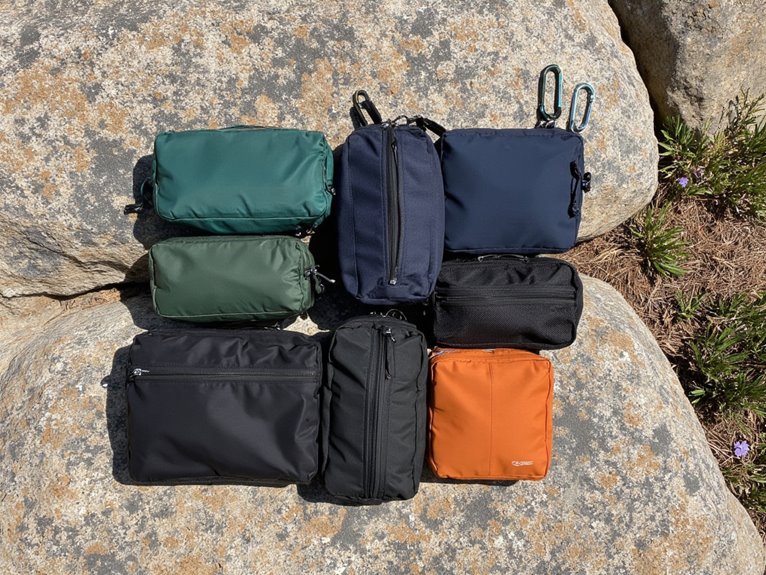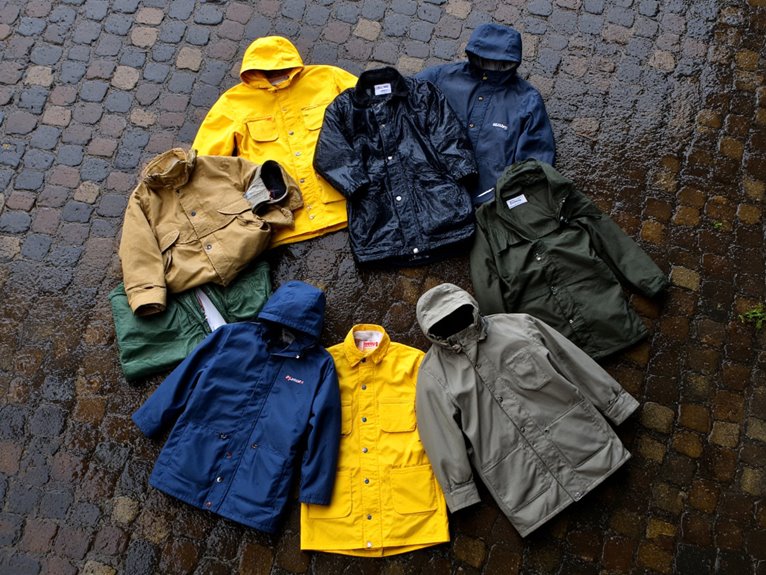Do You Need a Windshield With a Jetboil?
A windshield is a vital accessory for Jetboil users, as it substantially boosts cooking performance and safety in windy conditions by providing an additional layer of protection for the flame. Without a windshield, the Jetboil's performance would be compromised, leading to reduced cooking times and decreased efficiency. While a windshield is essential for windy conditions, there are scenarios where it may not be necessary, such as calm, sheltered areas or short, lightweight trips. To determine if you need a windshield with your Jetboil, consider the wind conditions you'll encounter and examine alternative wind protection methods to optimize your outdoor cooking experience.
We are supported by our audience. When you purchase through links on our site, we may earn an affiliate commission, at no extra cost for you. Learn more. Last update on 26th December 2025 / Images from Amazon Product Advertising API.
Understanding Jetboil Wind Performance
Operating in windy conditions, Jetboil systems have demonstrated remarkable resilience and adaptability, consistently delivering reliable performance despite turbulent air flows.
In such environments, the system's design plays a vital role in maintaining combustion efficiency.
The clever placement of the burner and pot support safeguards that the flame remains protected from strong gusts, allowing for consistent heat output.
Moreover, the angled pot support and heat shield work in tandem to deflect wind and maximize heat retention.
As a result, Jetboil systems have proven capable of withstanding moderate to strong winds, making them an excellent choice for outdoor enthusiasts and adventurers who frequently encounter windy conditions.
Benefits of a Windshield in Windy Conditions
In windy conditions, a windshield plays a pivotal role in augmenting the performance of a Jetboil system, providing an additional layer of protection that enables the flame to thrive despite turbulent air flows.
By blocking gusts and eddies, the windshield guarantees a consistent and stable flame, reducing the risk of extinguishment.
This is particularly essential in high-altitude or coastal environments where winds can be fierce.
Without a windshield, the Jetboil's performance would be compromised, leading to reduced cooking times and decreased efficiency.
When to Ditch the Windshield Completely
When to abandon the windshield altogether is a vital consideration for outdoor enthusiasts.
In certain scenarios, such as solo stove use cases or extremely high wind conditions, the benefits of a windshield may be outweighed by the drawbacks.
This is critical to understand these specific situations to optimize the performance of your Jetboil system.
Solo Stove Use Cases
Most backpackers and campers will find themselves in situations where the Solo Stove's compact design and minimal wind resistance make it a more practical choice than a windshield-equipped setup.
In these situations, ditching the windshield completely can be the way to go.
Short, lightweight trips where every ounce counts
Backpacking in calm, sheltered areas with minimal wind
Cooking in warm, dry conditions where snowmelt or boiling time is not a concern
Situations where stove stability is not a priority, such as on a picnic table or flat rock
High Wind Conditions
High Wind Conditions: When to Ditch the Windshield Completely
Strong gusts exceeding 20 mph can render a windshield-equipped setup impractical, as the constant adjustments and stabilizations required to maintain a steady flame become more of a hindrance than a help.
In such conditions, the windshield may even become a liability, as the increased wind resistance can cause the stove to topple over.
Instead, consider ditching the windshield altogether and opting for a more aerodynamic setup.
This will allow the flame to adapt to the wind, reducing the risk of extinguishment.
Jetboil Models and Windshield Compatibility
When selecting a Jetboil model to pair with a windshield, compatibility is vital.
The Jetboil Flash, a popular choice among outdoor enthusiasts, offers seamless integration with certain windshield designs.
However, it's essential to ponder pot support options to guarantee a stable and efficient cooking setup.
Jetboil Flash Compatibility
Each Jetboil model is designed to work seamlessly with a specific Windshield, ensuring peak performance and efficiency in various outdoor settings.
The Jetboil Flash, in particular, is compatible with a range of Windshields, allowing users to customize their cooking setup according to their needs.
Some key compatibility details bear noting:
The Jetboil Flash is compatible with the Jetboil Windshield, which provides excellent wind protection and flame stability.
The Flash is also compatible with the Jetboil Pot Support, which allows for the use of larger pots and cookware.
Additionally, the Flash can be used with the Jetboil Carrying Case, making it easy to transport and store.
Pot Support Options
The Jetboil Flash's compatibility with various pot support options enables users to tailor their cooking setup to specific needs, with the Jetboil Pot Support being a popular choice for its ability to accommodate larger cookware.
This support allows for stable and secure cooking with pots up to 10 inches in diameter.
Additionally, the Flash is compatible with the Jetboil Tripod, which provides extra stability on uneven terrain.
The Flash also works with other third-party pot supports, offering users flexibility in their cooking setup.
When paired with a windshield, these pot support options facilitate efficient and reliable cooking in various outdoor environments.
Alternative Wind Protection Methods
In addition to using a windshield with a Jetboil, backpackers can employ other techniques to mitigate wind's impact on their cooking setup. These alternatives can be particularly useful when a windshield is not available or feasible.
Some alternative methods for wind protection include:
- Using natural shelters such as rock outcroppings or trees to block wind
- Creating a makeshift windbreak with trekking poles and a jacket or rain gear
- Cooking in a protected area such as a cave or overhang
- Orienting the cooking setup to minimize wind exposure
Windshield Weight and Bulk Considerations
Carrying a windshield with a Jetboil necessarily entails accepting additional weight and bulk in one's backpack, factors that backpackers must carefully weigh against the benefits of improved cooking performance in windy conditions.
When considering a windshield, it's essential to evaluate the added weight and bulk against the potential benefits.
A typical windshield weighs around 3-6 ounces (85-170 grams) and takes up approximately 1-2 liters of space in your backpack.
While this may not seem like a significant addition, it can be a vital consideration for ultralight backpackers or those with limited pack space.
Ultimately, the decision to carry a windshield depends on your individual priorities and the specific demands of your trip, and it's a key consideration that may sway your decision.
Campsite Selection for Minimal Wind
When scouting for a campsite, look for natural windbreaks like clusters of trees, boulders, or hills that can provide a buffer against prevailing winds.
A well-chosen campsite can substantially reduce wind exposure, making cooking with a Jetboil more manageable.
Avoid ridges and summits, as they tend to be windy and exposed.
Opt for valleys and depressions, which are often more sheltered.
Choose a campsite with a natural windbreak, such as a stand of trees or a boulder field.
Be mindful of wind direction, and position your campsite accordingly to minimize exposure.
Cooking in Shelters and Windbreaks
By positioning a Jetboil within a shelter or windbreak, campers can substantially reduce wind interference and create a more stable cooking environment.
This setup allows for more efficient fuel consumption and improved cooking performance.
When selecting a shelter or windbreak, consider the direction of the wind and the shelter's design.
A well-designed shelter can deflect wind and create a calm cooking zone.
Natural formations like rock outcroppings, trees, or snow banks can also serve as effective windbreaks.
Additionally, portable windbreaks like tarps or snow walls can be constructed to block wind.
Assessing Your Personal Wind Tolerance
In evaluating your personal wind tolerance, consider the maximum wind speed at which you can comfortably cook and function safely.
This self-assessment is crucial in determining whether a windshield is necessary for your Jetboil setup.
Can you maintain a steady flame in moderate winds (5-10 mph)?
Do you feel comfortable cooking in gusty conditions (10-15 mph)?
Can you efficiently prepare a meal in sustained winds (15-20 mph)?
Do you experience difficulties cooking in extreme winds (above 20 mph)?


